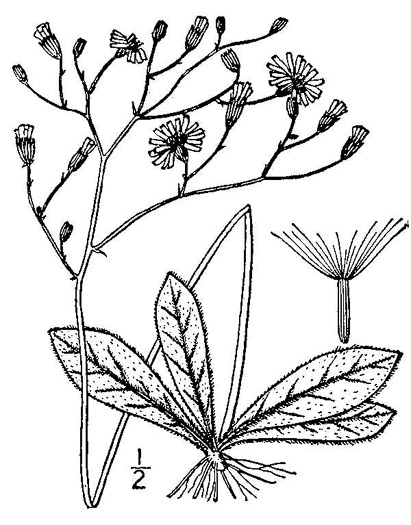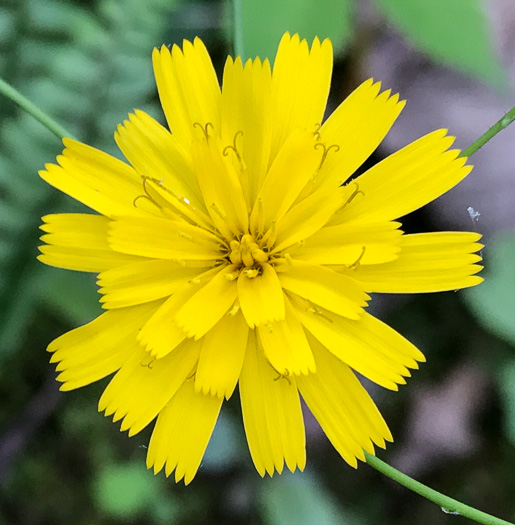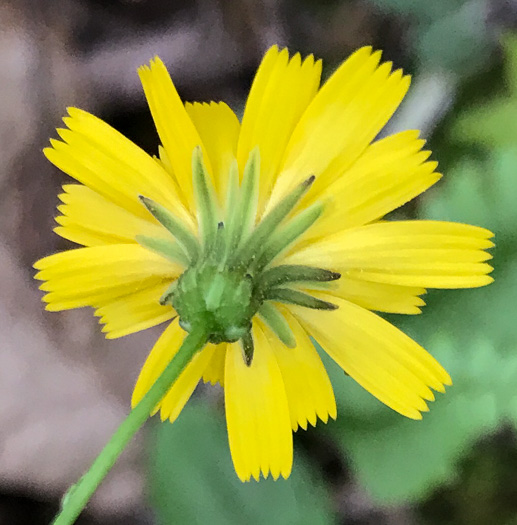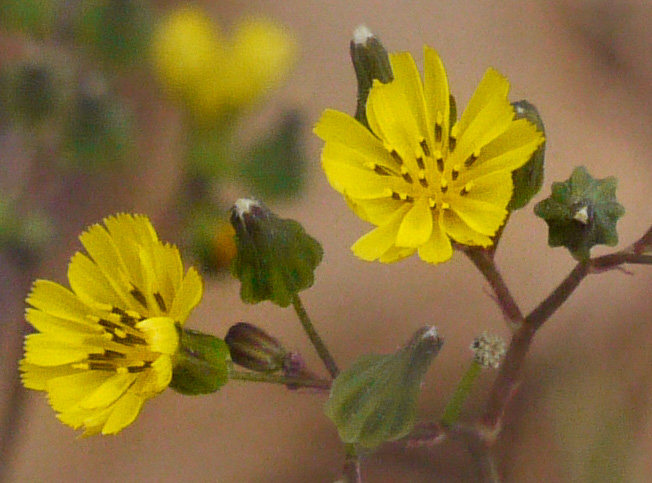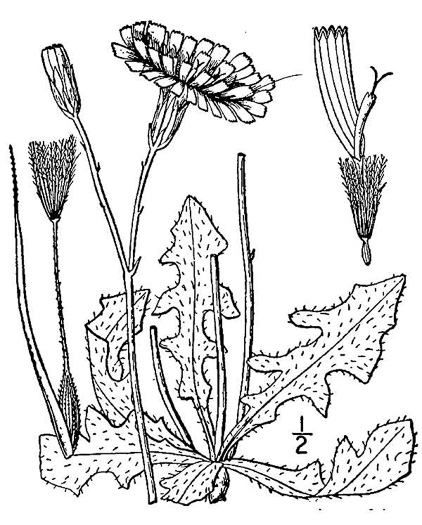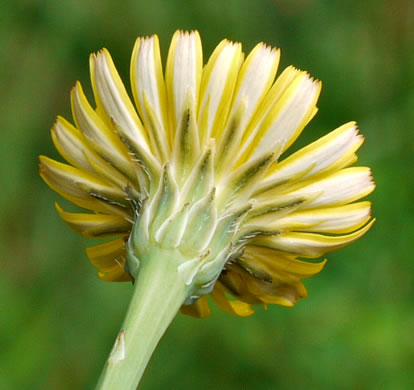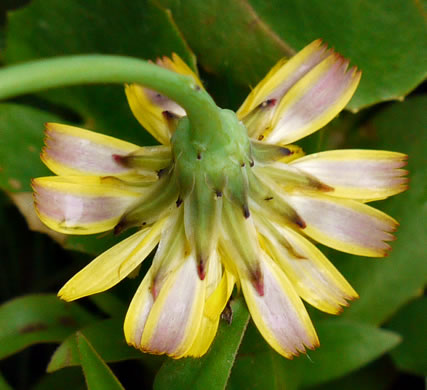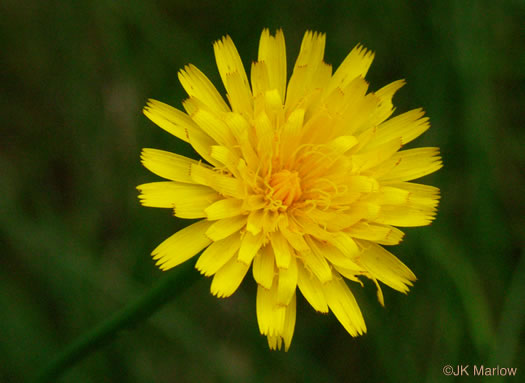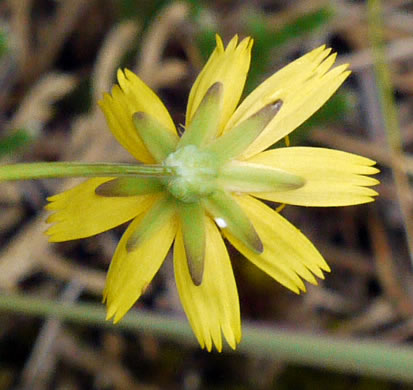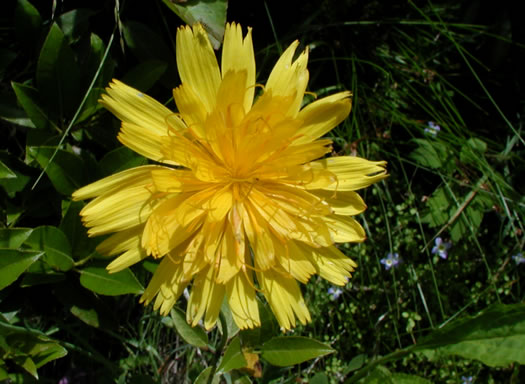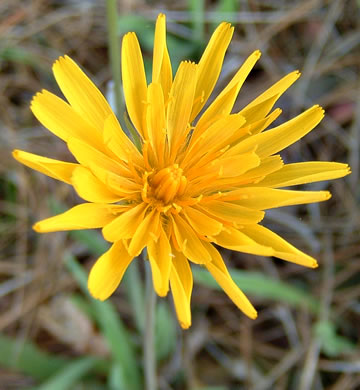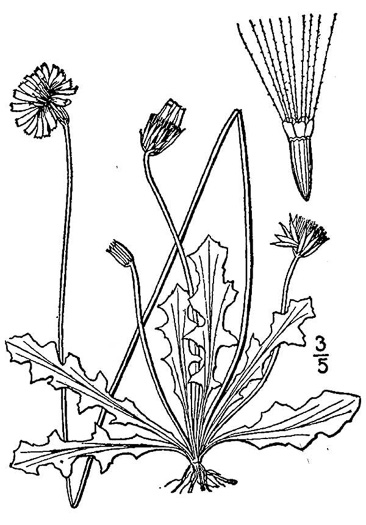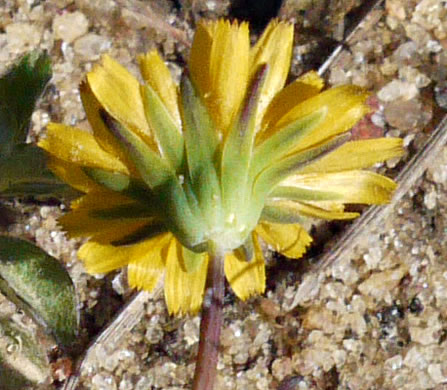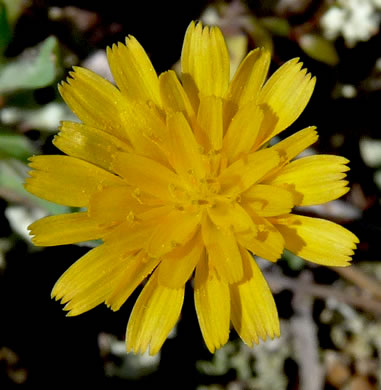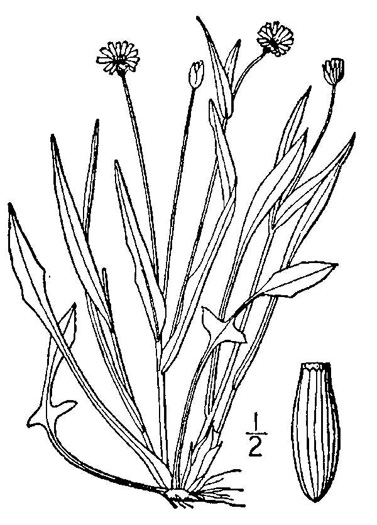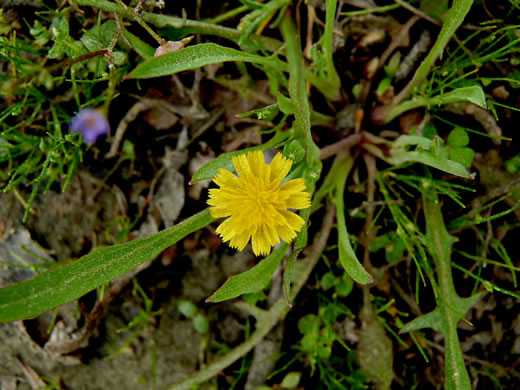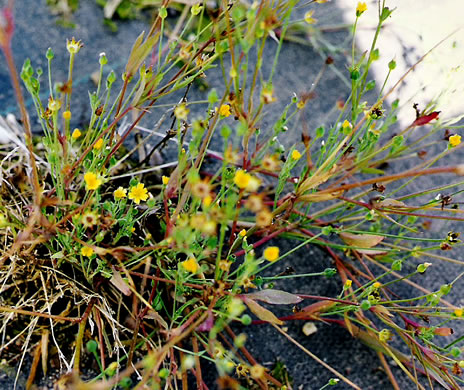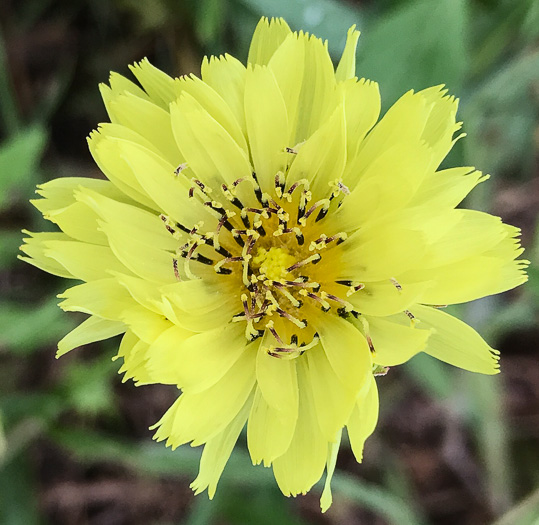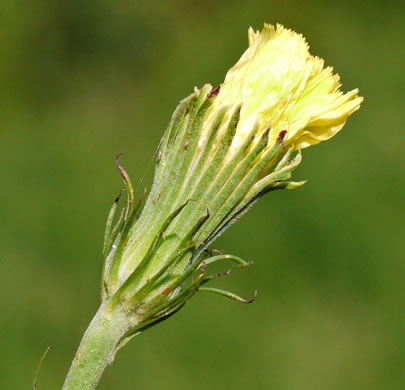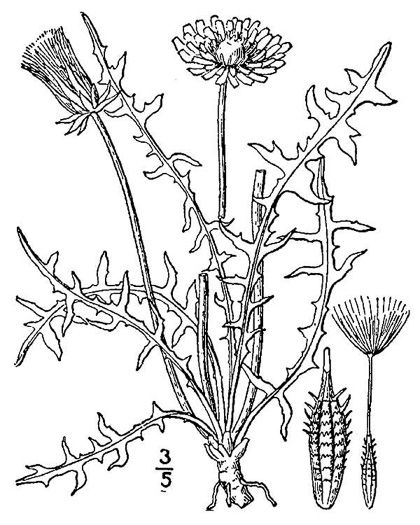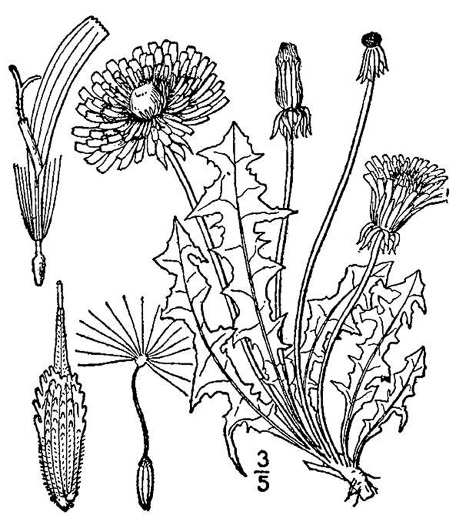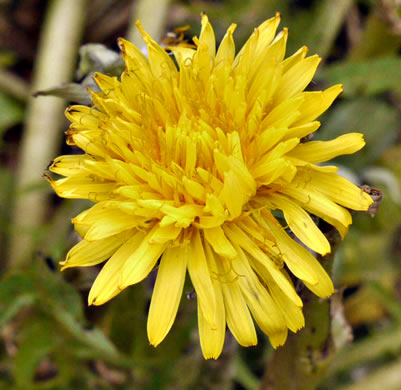Your search found 30 image(s) of Dandelions and Dandelion-like species.
To see larger pictures, click or hover over the thumbnails.
To go to the plant's detail page, click its name.
 Habitat: Dry forests, woodland margins, roadsides
Habitat: Dry forests, woodland margins, roadsides
Rays golden-yellow, 5-toothed, per Vascular Flora of the Carolinas (Radford, Ahles, & Bell, 1968).
Peduncles usually stipitate-glandular. Bracts acute, about 1mm wide, per Vascular Flora of the Carolinas (Radford, Ahles, & Bell, 1968).
 Habitat: Flowerbeds, suburban woodlands, roadsides, disturbed areas, trail edges, hammocks, rocky woodlands, floodplains
Habitat: Flowerbeds, suburban woodlands, roadsides, disturbed areas, trail edges, hammocks, rocky woodlands, floodplains
Flower heads are small and composed of 10-20 ray flowers, per Atlantic Coastal Plain Wildflowers (Nelson, 2006).
 Habitat: Roadsides, fields, disturbed areas
Habitat: Roadsides, fields, disturbed areas
Involucral bracts imbricate, in several series, per Vascular Flora of the Carolinas (Radford, Ahles, & Bell, 1968).
Phyllaries narrowly lanceolate, unequal, margins scarious, green to darkened, per Flora of North America.
Ray flowers yellow and numerous; disk flowers absent, per Wildflowers of Tennessee (Carman, 2005).
 Habitat: Rich, moist forests
Habitat: Rich, moist forests
Ray flowers orangish-yellow and numerous. Disk flowers absent, per Wildflowers of Tennessee, the Ohio Valley, and the Southern Appalachians (Horn, Cathcart, Hemmerly, & Duhl, 2005).
 Habitat: Cliffs and rock outcrops at medium to high elevations
Habitat: Cliffs and rock outcrops at medium to high elevations
In Krigia, the involucral bracts are in 1 series, per Vascular Flora of the Carolinas (Radford, Ahles, & Bell, 1968).
Flower heads bright yellow, solitary on leafless stalk (disc flowers absent), per Wildflowers of the Southern Mountains (Smith, 1998).
 Habitat: Woodlands, roadsides, wet prairies, low damp meadows, disturbed areas
Habitat: Woodlands, roadsides, wet prairies, low damp meadows, disturbed areas
The 4-20" tall scape has a terminal, solitary flower head 1.2 to 1.8" wide, per Wildflowers of Tennessee (Carman, 2005).
 Habitat: Rocky woodlands, roadsides, disturbed areas
Habitat: Rocky woodlands, roadsides, disturbed areas
Krigia's involucral bracts are in a single series (vs. 2 in Taraxacum), per Wildflowers of the Southern Mountains (Smith, 1998).
Flower heads 1-2" wide, solitary, consisting of ray flowers only, per Wildflowers of Tennessee, the Ohio Valley, and the Southern Appalachians (Horn, Cathcart, Hemmerly, & Duhl, 2005).
 Habitat: Fields, roadsides, disturbed places
Habitat: Fields, roadsides, disturbed places
Compact flower heads are borne singly at the end of short axillary stalks, per Atlantic Coastal Plain Wildflowers (Nelson, 2006).
The only leafy-branched Krigia of the southeastern Atlantic Coastal Plain, per Atlantic Coastal Plain Wildflowers (Nelson, 2006).
 Habitat: Dry and moist forests, roadsides, meadows, fields
Habitat: Dry and moist forests, roadsides, meadows, fields
Ray flowers pale yellow, numerous; disk flowers absent, per Wildflowers of Tennessee, the Ohio Valley, and the Southern Appalachians (Horn, Cathcart, Hemmerly, & Duhl, 2005).
Inner bracts in 1 series, outer bracts shorter & in several series, per Vascular Flora of the Carolinas (Radford, Ahles, & Bell, 1968).
 Habitat: Roadsides, lawns, pastures, other disturbed sites
Habitat: Roadsides, lawns, pastures, other disturbed sites
Disc flowers absent. Ray flowers yellow and bisexual, per Vascular Flora of the Carolinas (Radford, Ahles, & Bell, 1968).
 Habitat: Lawns, roadsides, urban areas, pastures, disturbed areas, trailsides, less commonly in a variety of less disturbed habitats
Habitat: Lawns, roadsides, urban areas, pastures, disturbed areas, trailsides, less commonly in a variety of less disturbed habitats
Disc flowers absent. Ray flowers yellow and bisexual, per Vascular Flora of the Carolinas (Radford, Ahles, & Bell, 1968).
Outer involucral bracts are reflexed and about as long as inner bracts, per Wildflowers of Tennessee (Carman, 2005).

